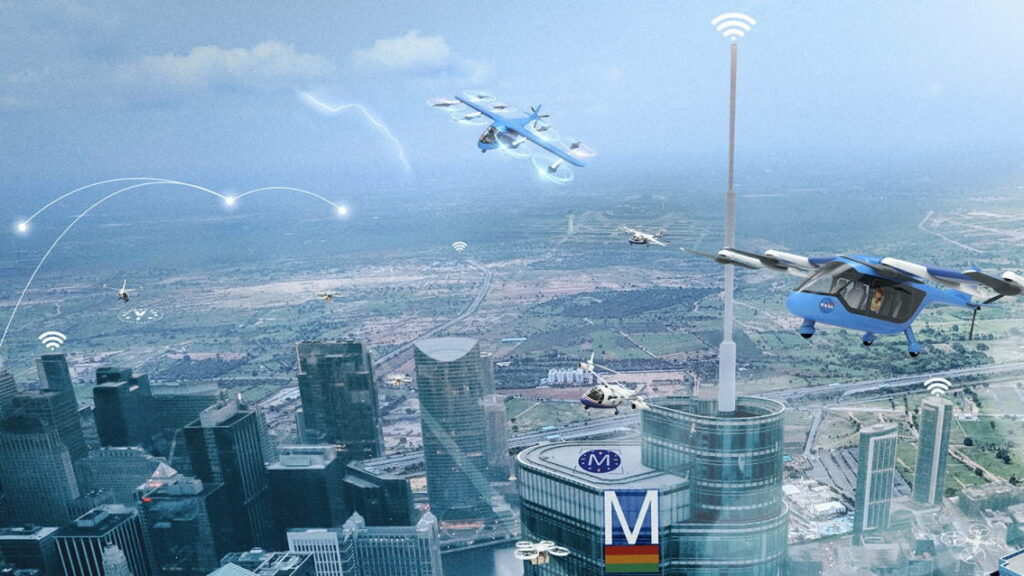
NASA has entered into a Space Act Agreement (SAA) with The Longbow Group in order to develop beyond visual line-of-sight (BVLOS) flight corridors for the testing of Advanced Air Mobility (AAM) unmanned aerial system (UAS) in Hampton Roads, Virginia. Longbow consists of researchers and supporters from the city of Hampton, Virginia, Raytheon, and Hampton University. The University’s involvement allows students to be engaged with local cutting-edge sUAS research, testing and development.
NASA’s Langley Research Center (LaRC) will partner with Longbow on the development and assessment of a Concept of Operations (ConOps), supporting infrastructure, data sharing requirements and other factors required to conduct BVLOS operations between LaRC’s City Environment Range Testing for Autonomous Integrated Navigation (CERTAIN) range and Longbow’s Unmanned Systems Research and Technology Center (USRTC) on Fort Monroe, Virginia.
NASA’s AAM High Density Vertiplex (HDV) project aims to both prototype and assess a UAM ecosystem using small UAS as surrogates for larger Urban Air Mobility (UAM) aircraft. The project will also perform the testing, safety risk assessments, documentation, and collaboration with the FAA to enable routine BVLOS flights at NASA Langley.
Other possible areas of collaborative research include UAS Traffic Management, supplemental data service providers, surveillance radars, meteorological systems, data networks, data and command & control communications.
Lou Glaab, tech lead on the HDV project, commented: “NASA Langley is pleased to collaborate with Longbow to develop a ConOps for a beyond visual line-of-sight corridor and potential follow-on collaboration. When implemented, these efforts will enable the UAM ecosystem prototype assessment with longer, more complex flight routes, within the HDV subproject for AAM along with establishing operational credit for an array of advanced NASA technologies.”
“One major benefit will be collaborating with Raytheon and Hampton University (HU) to include radar inputs from their Skyler radar. This system will be mounted on a HU building in downtown Hampton and is designed to help enable ground-based sense and avoid, and will complement and extend our radar systems we are currently installing at NASA LaRC.”
Marco Sterk, Longbow’s President and CEO, said: “We are very excited about the opportunity to support this project and work with the researchers at NASA Langley in collaboration with Hampton University, City of Hampton and Raytheon. It takes a community to build a community, and that is so true when it comes to developing a local self-supporting eco-system, involving industry, government and academia.”
Mayor Donnie Tuck of Hampton, Virginia stated: “By our collaboration and support for Longbow and NASA we expect this project to not only help our existing local unmanned system businesses, but that it will also attract additional technology companies in the AAM market with their hi-tech jobs to come to our city.”


















